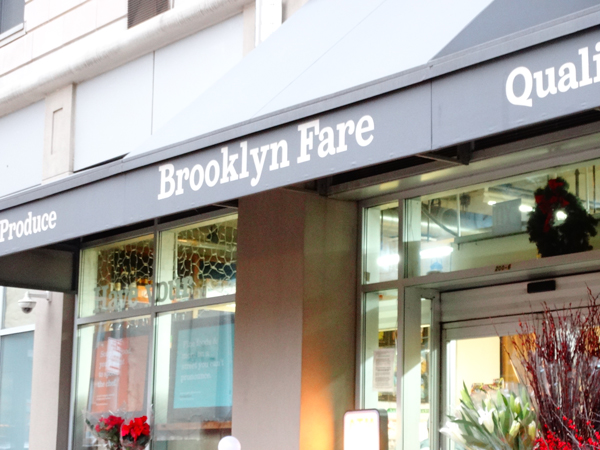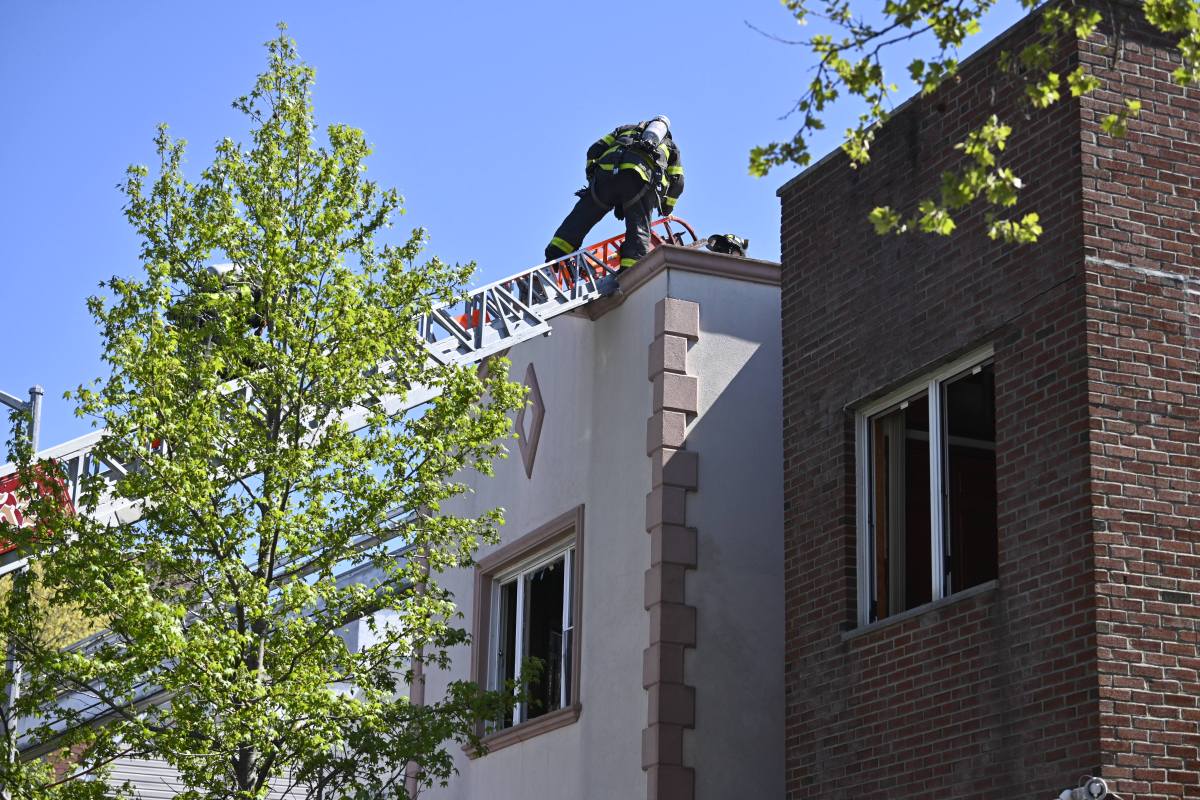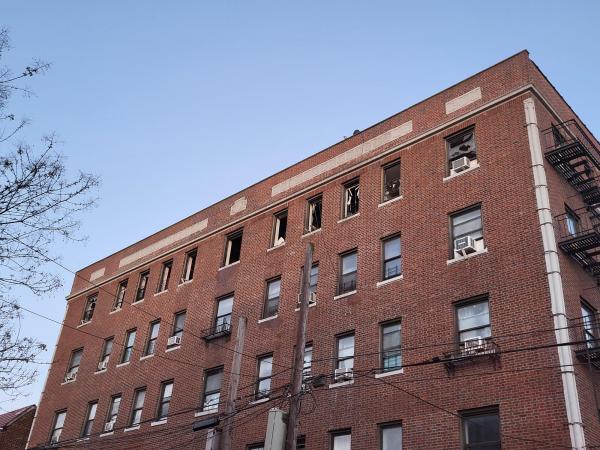
BY MICHELE HERMAN | I didn’t realize this until the other day when I interviewed Moe Issa, founder of Brooklyn Fare supermarkets, but all my life I’ve been looking for the perfect grocer. I treasure Trader Joe’s, but you can’t do a complete week’s shopping there — where are the Corn Chex and the aluminum foil? I appreciate Western Beef’s rock-bottom prices, but it’s not the most welcoming environment. Chelsea Market is full of first-rate stuff — the Manhattan Fruit Exchange, Amy’s Bread, Italian imports — but it’s a madhouse. I tolerate D’Agostino because it’s two blocks from home, and am still warily circling Mrs. Green’s.
But now I’ve spent an hour talking to Issa and think maybe I’ve found my man. He won me over so completely that I’m crossing my fingers that he isn’t too good to be true. His third Brooklyn Fare will be the surprising future occupant of the huge space in the Archive building, at 666 Greenwich St., that D’Agostino will be vacating on Oct. 15.
(The official story of how D’Ag lost its lease is strange and unconvincing, involving some post-Sandy paperwork that didn’t get filed in time to the landlord, Rockrose. Patricia Dunphy, Rockrose senior vice president, said the company was not at liberty to speak yet. Understandably, D’Ag didn’t return my call. Issa says that Rockrose aggressively recruited him once they knew that D’Ag was leaving.)
Issa, who was born in Israel and moved as a teenager to the U.S., growing up in Park Slope, is a self-described regular person. He used to be a distributor for Pepsi. He didn’t much like the feel of the supermarkets where he spent his days.
“I’m not knocking anyone,” he told me, “but the others are basically corporate. They send a store plan and the employees have to follow it.”
So he decided to revive the tradition of the neighborhood grocery. He opened his first store in 2009 on Schermerhorn St. in Downtown Brooklyn, with a tiny, much-celebrated restaurant attached to it, Chef’s Table. He opened his second store two years ago in a new apartment building on far W. 37th St. in Hell’s Kitchen, where he was also actively wooed by the landlord. He is trying to be all things to all people.
“We honor requests,” he said. “We do anything the neighborhood wants.”
To understand the M.O. of Mo’s Brooklyn Fare, you need to learn a bit of grocer-ese. S.K.U. stands for “stock-keeping unit” and it refers to any particular piece of merchandise for sale in a store. The average supermarket carries 10,000 to 30,000 S.K.U.’s. Suburban superstores carry 30,000 to 60,000. Issa says that his 37th St. store, between Ninth and Tenth Aves., carries 89,000.
That’s because it’s really three stores jammed into one quite small one (11,000 square feet). First, it has all the unglamorous supermarket stuff — Saran Wrap, Birds Eye vegetables, etc. It’s also a high-end store with cheery graphics, gluten-free options, Bob’s Red Mills grains, a huge line of Meyer’s Clean Day products, and the biggest wall of premium ice cream I’ve ever seen. Finally, it’s a gourmet shop whose cheese department includes five kinds of Manchego, plus pastries and prepared foods that are mostly organic. These latter are all made from scratch in the large basement by chef Cesar Ramirez of Chef’s Table, which scores 27 out of 30 in Zagat’s and is Brooklyn’s only Michelin three-star restaurant.
The prices? Surprisingly — almost weirdly — reasonable. The other day, Haagen-Dazs was $4.99 a pint, not as good as Western Beef’s $3.99, but the selection is much bigger. Barilla pasta was $1.59 a pound, 16 ounces of Smucker’s peanut butter $4.29. Breakstone’s butter was on sale for $3.99 a pound (at the Archive D’Ag it was a whopping $8.95). A croissant was $1.95.
When D’Ag leaves in mid-October, Brooklyn Fare will spend about three months renovating. Though that store, around since 1987, still looks appealing to my untrained eye, Issa said that everything, particularly the refrigeration, needs serious updating. He is excited about having 15,000 square feet to play with in Manhattan.
“It allows me to do what I really want to do,” he said.
I said, sounding like a cynical, change-wary Villager, that surely his West Village rent would be far more than he’s paying on 37th St. (a truly terrible block, hard by the Lincoln Tunnel, jammed with buses and the squeal of their brakes) and he would pass along the increase to his customers.
Not so, he said, and I might have kissed him had we not been talking on the phone.
“We’ll have the same pricing as in the other stores, with a single Web site everyone can shop from.”
He did admit that there may be a little variety from store to store. For instance, one store might offer a special aged steak at a premium price. But he hastened to add that they will always offer more modestly priced cuts.
“We won’t have the absolute lowest prices, because we really focus on quality,” he said. “We could give you meat for $1.99 a pound, but you might get a stomachache or lose your teeth eating it.”
I asked him whom he considers his nearest competitors in the West Village.
“There’s not much out there,” he responded.
I asked how his prepared foods would stack up against, say, Citarella. He said, without hesitating, go ahead and do a taste test.
It just so happens that I had an exceedingly unneighborly first Brooklyn Fare experience. I was jotting down a few prices at the W. 37th St. store, having just done the same at the D’Ag in the Archive. But the aisles at Brooklyn Fare are much narrower and my secret shopping turned out to be rather conspicuous. The store manager began yelling at me, demanding that I stop, saying that I had no right to write down prices. He remained hostile even after I introduced myself and explained that I had called the company and was able to produce the name of the contact person.
Meanwhile, a good friend who lives near that store told me that she loves it except for one serious ongoing irritation: the cashiers overcharge some 20 to 30 percent of the time.
“I’ve yet to be wrong,” she said, but each time the cashier has to zigzag through the maze of the store to check the price. “They never apologize,” she added.
When I raised these issues, Issa was blessedly undefensive, explaining the challenges of syncing-up the signs and the prices of those 89,000 S.K.U.’s.
“I’m working very hard on it,” he said. “Much happens between Friday and Saturday when the sale prices change,” he explained, “and we switched our grocer supplier in January, and my system and their system did not match. If you saw how much effort goes into the pricing, you’d be pulling your hair out.”
He also said that customers constantly try to game the system, which can wear the cashiers down. As for the yelling manager, he said it was a major overreaction, and explained why: “It’s a copycat business.”
A store in Queens, he said, copied his entire formula, down to the colors of the Web site.
Issa is particularly proud of his produce.
“I’m a big fruit person,” he said. “The quality is really, really good and the prices are reasonable. I send my produce manager to the market two to three times a week. We check case by case and try everything. If it’s not to my liking, it goes right back.”
Produce is marked with the country of origin, generally U.S., Canada and Mexico. I didn’t find the prices great: heads of organic leaf lettuce from Mexico for $2.99 each, Canadian heirloom tomatoes $5.99 a pound. Unlike Mrs. Green’s, he does not list the region: “I don’t want to do overkill with details, but we do have a lot of local products.”
In the Archive store, the extensive cheese department will be at the entrance next to the produce.
“It will be big and beautiful,” he said.
Not only that, if a neighbor upstairs doesn’t feel well or if a babysitter runs out of milk, he’ll have it sent up. He will also offer a discount program that earns customers $10 off for every 300 points earned (1 point equals $1 spent).
“We will not disappoint anyone,” he insisted, perhaps sensing my mingled hope and skepticism, particularly given the fact that the restaurant that was supposed to open in conjunction with the W. 37th St. store has been delayed for ages. “Anything a customer needs — they can approach me directly.”

















